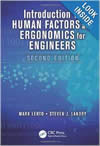All Articles
Accident Prevention & Safety
Insurance
Alternative Dispute Resolution (ADR)
International Trade
Animals
Investigation & Surveillance
Aquatics Safety
Law Enforcement
Architecture
Life Expectancy - Life Care Planning
Arms - Guns - Weapons
Logistics - Reverse Logistics
Artificial Intelligence (AI) / Machine Learning (ML)
Manufacturing
Automotive - Vehicular
Market Research
Banking
Mediation
Business Consulting
Medical - Medicine
Child Witch Phenomenon
Medical Malpractice
Computers
Medicine
Counseling
Meditation
Digital Forensics
Obstetrics - Gynecology (OBGYN)
Documentation Examination & Analysis
Patents
Engineering
Radiology
Engines (Combustion - Diesel)
Real Estate
Eyewitness Testimony
Security
Failure Analysis
Sexual Abuse - Molestation - Harassment
Finance
Spirituality
Forgery & Fraud
Taxation
Healthcare
Toxicology
Healthcare Facilities - Hospitals
Transportation
Human Resources
Warnings & Labels
HVAC - Heating, Ventilation, Air Conditioning
Workplace Violence
More...

ELEVATORS-ESCALATOR-AUTOMATIC-DOORS-PAGE ARTICLES MAIN PAGE
. Contact Us if you are interested in having your work published on our website and linked to your Profile(s).
All Articles
Accident Investigation & Reconstruction
Internet Marketing
Alcohol, Tobacco & Other Drugs
Investigation & Surveillance
Artificial Intelligence (AI) / Machine Learning (ML)
Legal Issues
Automotive - Vehicular
Logistics - Reverse Logistics
Boating
Market Research
Business Consulting
Mediation
Construction
Medical Malpractice
Corrosion
Medical Records Review
Counseling
Medicine
Criminology
Metallurgy
Design
Mining
Digital / Crypto Currency
Nursing
Documentation Examination & Analysis
Oil & Gas
Economics
Pain Management
Elder Abuse
Pharmaceuticals
Electrical - Electrocution
Police Practices & Procedures
Engineering
Politics
Environment
Premises Liability
Exercise & Fitness
Public Speaking
Food & Beverage
Radiology
Forensic Psychiatry
Recreation & Sports
Hazardous Materials
Security
Human Factors
Sexual Abuse - Molestation - Harassment
HVAC - Heating, Ventilation, Air Conditioning
Terrorism - Homeland Security
Hydrology
Yoga
More...
Featured Articles
There are no active articles here at this time. Please use the search bar, try another category, or contact us if you would like to contribute an article.
This Article is unavailable. Contact Us
Search articles by title, description, author etc.
Sort Featured Articles
Featured resources
Introduction to Human Factors and...
by Mark R. Lehto & Steven J. Landry
Equity Value Enhancement: A Tool to...
by Carl Sheeler, PhD
The Wireless Dawn.....: Think...
by Dr. Rod Ghani
Follow us










